Today's Space Weather is Brought to You by...

Like meteorologists who check temperatures, winds, and pressure to predict the weather on Earth, scientists
monitor the Sun and our space environment to forecast the weather in space.
Using high-tech spacecraft, Earth-based telescopes, and old-fashioned hand sketches of the Sun,
scientists search the surface of the Sun for signs of flares and CMEs. They monitor the solar wind moving toward
Earth to see if it is carrying foul weather. And they measure the energy flowing into Earth's upper atmosphere and
the distortion of magnetic fields near the ground.
From these bits of information, NOAA's Space Environment Center forecasts whether our
space weather will be mild or wild.
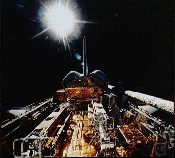
|
How on Earth Do Solar Storms Affect Us?
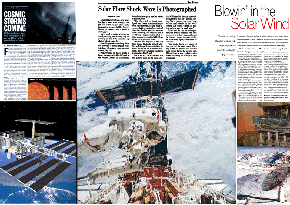
There's no need to run for cover from space weather. Storms from the Sun do not harm life on
Earth -- but they do affect the way we live -- particularly since we rely so much on modern technology.
Space weather can distort radio signals and navigation devices such as Loran and the Global Positioning
System. In March 1989, listeners in Minnesota could hear the broadcasts of the California Highway Patrol.
Storms in space can disrupt and cut short the work of satellites. In January 1997, a communications
satellite went dead just hours after a coronal mass ejection (CME) struck the magnetosphere. The loss of
that satellite disrupted television signals, telephone calls, and part of a U.S. earthquake-monitoring network.
Magnetic storms can pump extra electricity into our power lines and pipelines, causing blackouts and fuel
leaks. In March 1989, a magnetic storm burned up a $36 million transformer in New Jersey and collapsed the
entire power grid in Quebec, Canada, leaving six million people without electricity.
Space weather can pose a radiation hazard for astronauts. In August 1972, an intense solar flare
that occurred between the flights of Apollo 16 and 17 would have killed the astronauts if they had been on
the way to the Moon during that time.
|
Space Weather: Early Warnings
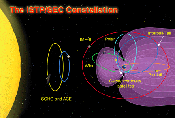
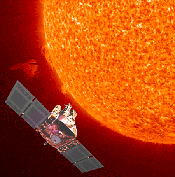
For much of the space age, the Sun, Earth, and the space in between have been studied separately.
Yet scientists have long suspected that our planet and its star form a connected, dynamic system. To better
understand the connections, scientists now make coordinated observations from space and from the ground.
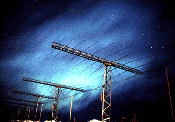
A wide array of technology is used to monitor space weather. Utilizing
a fleet of spacecraft, scientists in dozens of countries observe the Sun, the solar
wind, the near-Earth space environment, and the aurora. Ground-based telescopes, radar, and
supercomputers are used alongside these spacecraft to provide a picture of current and future
space weather conditions. We are learning what it means to truly live in the
atmosphere of the Sun.
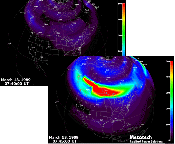
|